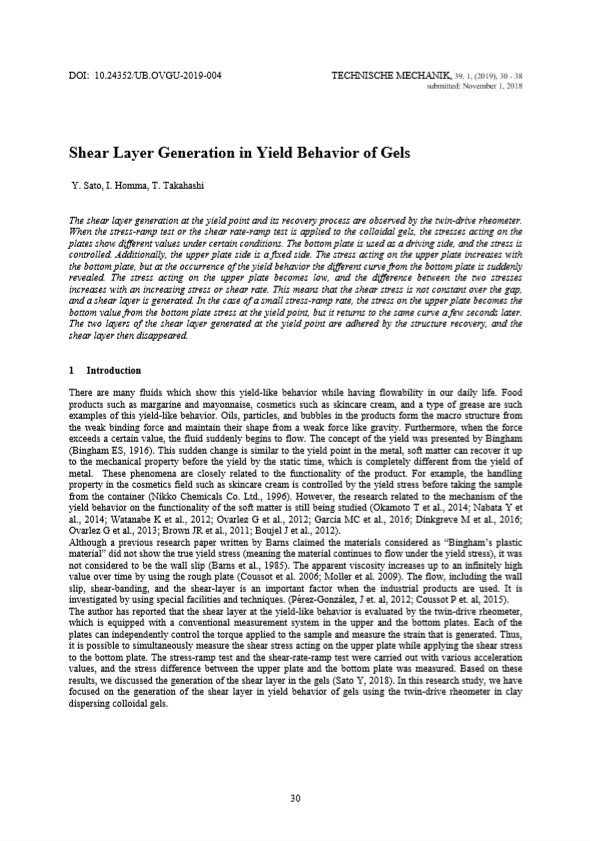Shear Layer Generation in Yield Behavior of Gels
DOI:
https://doi.org/10.24352/UB.OVGU-2019-004Abstract
The shear layer generation at the yield point and its recovery process are observed by the twin-drive rheometer. When the stress-ramp test or the shear rate-ramp test is applied to the colloidal gels, the stresses acting on the plates show different values under certain conditions. The bottom plate is used as a driving side, and the stress is controlled. Additionally, the upper plate side is a fixed side. The stress acting on the upper plate increases with the bottom plate, but at the occurrence of the yield behavior the different curve from the bottom plate is suddenly revealed. The stress acting on the upper plate becomes low, and the difference between the two stresses increases with an increasing stress or shear rate. This means that the shear stress is not constant over the gap, and a shear layer is generated. In the case of a small stress-ramp rate, the stress on the upper plate becomes the bottom value from the bottom plate stress at the yield point, but it returns to the same curve a few seconds later. The two layers of the shear layer generated at the yield point are adhered by the structure recovery, and the shear layer then disappeared.





